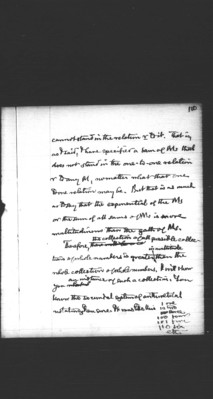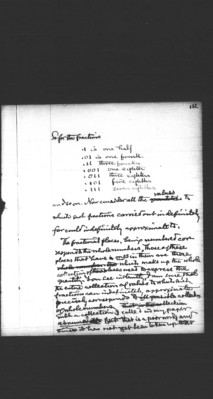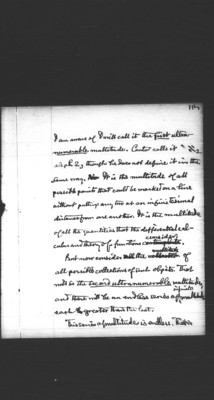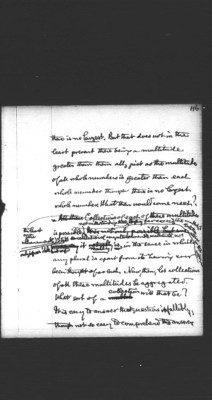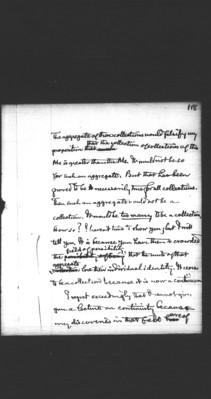Pages
86
110
cannot stand in the relation r to it. That is, as I said, I have specified a sam of Ms that does not stand in the one-to-one relation r to any M, no matter what that one to-one relation may be. But that is as much as to say that the exponential of the Ms or the sum of all sams of Ms is more multitudinous than the gath of Ms.
Therefore, the collection of all possible collections of whole numbers is greater in multitude than the whole collection of whole numbers. I will show you an instance of such a collection. You know the secundal system of arithmetical notation, I am sure. It runs like this 1 one 10 two 11 three 100 four 101 five 110 six etc.
87
112
So for the fractions .1 is one half .01 is one fourth .11 three fourths .001 one eighth .011 three eighths .101 five eighths .111 seven eighths
and so on. Now consider all the values to which such fractions carried out indefinitely far could indefinitely approximate to. The fractional places, being numbered correspond to the whole numbers. Those of these places that have ones in them are those which make up the whole collection of these places used to express the quantity. You see instantly, I am sure, that the entire collection of values to which such fractions can indefinitely approximate precisely corresponds to all possible collections of whole numbers. Such a collection I called in my paper abnumeral. But that is a poor word, and since it has not yet been taken up that
88
114
I am aware of I will call it the first ultranumerable multitude. Cantor calls it aleph 2, though he does not define it in the same way. It is the multitude of all possible points that could be marked on a line without putting any two at an infinitesimal distance from one another. It is the multitude of all the quantities that the differential calculus and theory of functions consider.
But now consider the multitude of all possible collections of such objects. That will be the second ultranumerable multitude, and there will be an endless series of infinite multitudes each greater than the last.
This series of multitudes is endless. That is
89
116
there is no largest. But that does not in the least prevent there being a multitude greater than them all, just as the multitude of all whole numbers is greater than each whole number though there is no largest whole number. What then would come next? Collections of each of these multitudes is possible, notwithstanding that the least of the ultranumerables far exceeds the multitude of all the atoms in the universe. Still a collection of any ultranumerable multitude not only is possible but [??] it really IS, in the sense in which any plural is apart from its having ever been thought of as such. Now, then, let collections of all these multitudes be aggregated. What sort of a collection will that be? It is easy to answer that question infallibly, though not so easy to comprehend the answer.
90
118
The aggregate of those collections would falsify my proposition that the collection of collections of the Ms is greater than the Ms. It would not be so for such an aggregate. But that has been proved to be necessarily true for all collections. Then such an aggregate would not be a collection. It would be too many to be a collection. How so? I haven't time to show you; but I will tell you. It is because you have then so crowded the field of possibility, that the units of that aggregate lose their individual identity. It ceases to be a collection because it is now a continuum.
I regret exceedingly that I cannot give you a lecture on continuity because my discoveries in that field are of
